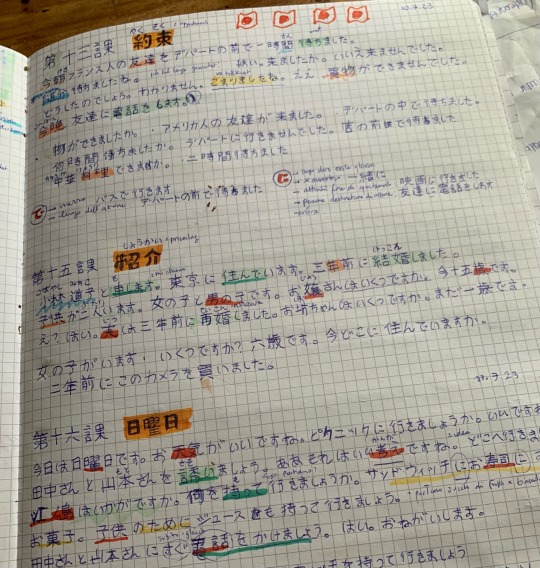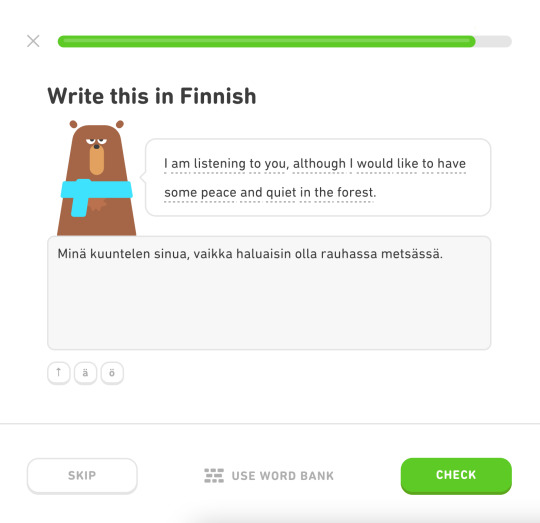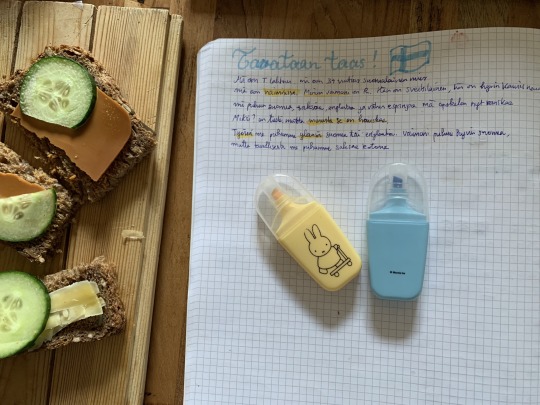#suomenkieli
Text
In Finnish we have this idiom "huitsin nevada" which basically means far away. It's used like "mee ny huitsin nevadaan siitä häirittemästä" = go away and don't bother me. Or "Se oli ihan huittin nevadassa!" = It's was so far away in the middle of nowhere!
Huitsin basically means very or much, or a something signifying a LOT. And nevada is Nevada USA. Because it is far away. So it's in a faraway place in a faraway Nevada.
Another far away place idiom we have is "missä pippuri kasvaa" = where pepper grows.
79 notes
·
View notes
Text


Japanese & Finnish notes 🇫🇮🎌
25 notes
·
View notes
Text
Arppa - Hiekkasäkki aivojen tilalla
Kuinka monta kertaa mä oon muistuttanu itteäni siitä,
Että elämä on tässä ja nyt?
Mutta sitten aina kuitenkin
Ehkä viistoista minsaa myöhemmin
Mä harhailen mielessä huomiseen, ylihuomiseen ja ens vuoteen
Aivan ku siellä ois muka jotain nähtävää
Enhän mä tiiä oonko enää ees hengissä
(...ainkai välilla)
0 notes
Text
Päivän Mäkelä
Vatnikilla on vaikeuksia suomen kielen sanojen kanssa.

0 notes
Text
tärkein esimerkki siitä miksi suomenkieli on maailmassa kaunein: seisahtelu
30 notes
·
View notes
Text
Look at my suomenkieli boy
8 notes
·
View notes
Text
Minä, pikkukakku: *10-vuotias, murrosikä* *englannin tunnilla luen ääneen kysymystä oppikirjasta kun ääneni murtuu*
Opettaja: Voi oikein hyvä, Pikkukakku! Tämä meidän suomenkieli on aika tylsän tasapaksua, mutta englantia puhuessa äänen on hyvä hieman kohota kysymyksen loppua kohden! Niin se erottuu toteamuksesta!
Minä, nyt: Hitto maikka taisi pelastaa mut nolostumiselta äänenmurroksesta!
5 notes
·
View notes
Photo

Each time a Finn needs to handle social interaction.
565 notes
·
View notes
Text
Finnish: One must know the differences between tässä, täällä, tuossa, tuolla, siinä, and siellä. Size, distance, pointability. Sometimes they change into other forms if there’s movement involved, and if that movement is exterior or interior. Everything must be coded into the word by case ending. Specificity and nuance are important.
Also Finnish: Roof and ceiling can be the same word.
#suomi#suomenkieli#finnish#finnish language#finnish is wack#i love finnish#rakastan suomea#languages#language memes#linguistics#nerding#they are completely different things
739 notes
·
View notes
Text
Funny thing, from that post about spinning and cats bc apparently spinning and purring is the same word in many eastern european languages:
I wrote the word "kehrätä" as the base verb without thinking. Because it is the correct base verb. It is the basic form of "to do something." But then I got into thinking about it too much and now it doesn't SOUND like a base verb?
But it really is. To spin/to purr is kehrätä, the base verb from which all the forms are conjugated from.
But then also, the way this language works, there is a shorter word that is used daily, kehrää. It's usually the passive version of kehrätä, basically "it spins/purrs". I say usually bc with the way Finnish is conjugated it can probably mean something else too, but I just can't think of it right now since I'm thinking in English. Too many options.
And once I got into thinking that kehrätä is too long, too complex, kehrää started to SOUND more like a base form of a verb. And I know it's not! It's my own damn language and I know it would sound wrong if inserted in places where the base form could be used.
But also, I have my brain rotted with too much theory about other languages so having a base verb that changes like that, to something simpler and shorter, has kinda started to feel unnatural?
Does anyone else have this experience?
16 notes
·
View notes
Text


Studying Finnish (2023)
#Finnish#suomenkieli#langblr#studyblr#polyglot#miffy#Nijntje#language blog#are toaster Bread with brunost and peaches#looking at this motivates me a lot to study finnish damn#so much miffy stuff#mine
23 notes
·
View notes
Text
"Vai mikä saatana se olikaan" is one of my favourite ways older people use cusswords.
6 notes
·
View notes
Text
A friend of mine and I were talking about the Finnish language
Me: Finnish doesn't have gender specific pronouns, we only use 'hän' and it's completely neutral. Spoken Finnish uses 'se' but that's also neutral.
Friend: I thought 'se' was for inanimate objects?
Me: yeah, it is. We just use it because we're all dead inside.
#finnish#language#langblr#Suomi#suomitumblr#suomijutut#suomiblr#suomitumppu#suomenkieli#gender#neutral
595 notes
·
View notes
Text
-pa -ka -ko -s liitepartikkelit
LAITAN PURKKIIN opeen liitepartikkeli esimerkkilauseita.
pa
Tulepa nyt. (Mennään reippaasti.) Peruskäyttö
Enpä olisi uskonut sitä Annista! Yllätys
Kylläpä riisipuuro nyt maistuisi. Idea
Mitäpä minä lääketieteestä tietäisin. Kysymys / varmistelu
(Et tykännyt puheesta oikeasti, ethän?) Kylläpäs tykkäsin! Eri mieltä
Menkääpä nyt siitä. Käsky / kehotus
ka
(Sinähän halusit vaaleanpunaisen?) Enkä, vaan punaisen. Peruskäyttö
Milloinka teidän omaisenne tulevat? Kysymys / varmistelu
(Hän toi niitä suojakäsineitä.) Eikä tuonut, ei ainakaan minulle! Vastaväite
Hän ei halua puhua eikä pukahtaa minulle. Luetteloissa
ko
Sinäkö et halunnut vaaleanpunaista? (Niin, minä.) Peruskäyttö
Eivätkö teidän omaisenne vielä ole tulleet? Kysymys / varmistelu
Tuletko(s) sieltä nyt! (Meidän pitää jo lähteä!) Käsky / kehotus
s
Mites menee? Peruskäyttö
Enpäs olisi halunnut missata sitä keikkaa! Yllätys
Onkos pomo jo paikalla? Kysymys / varmistelu
Äläpäs menekään vielä. (Tässä lomakkeessa oli vielä yksi kysymys.) Eri mieltä
Nostakaapas nyt toista jalkaa. Käsky / kehotus
11.5.20
16 notes
·
View notes
Conversation
Lapsi vs. englannin kieli
Catcat: Bye bye baby baby goodbye, lähden pois vaikka yksin jään...
Minä, 7v: MitEN se VOi jätTäÄ sen VAUVAN????
23 notes
·
View notes
Photo

Pearl Moon. The Finnish name for February, helmikuu, literally means pearl or bead month (or even more literally, pearl or bead moon). Linguists think it probably references the frozen water droplets or “beads” that can be seen hanging from tree branches and eaves. Icicles, essentially.
Helmikuu is statistically the coldest and most snow-rich month of the year in Finland. It is also when bright, sunny days slowly start appearing.
#etymology#folklore#finnish#february#pearls#snow#finland#pearl#winter#language#themoreyouknow#didyouknow#linguistics#words#oldways#kansanperinne#etymologia#suomenkieli#helmikuu#lumi#helmet#suomi#kieli#opiuutta#talvi
2 notes
·
View notes